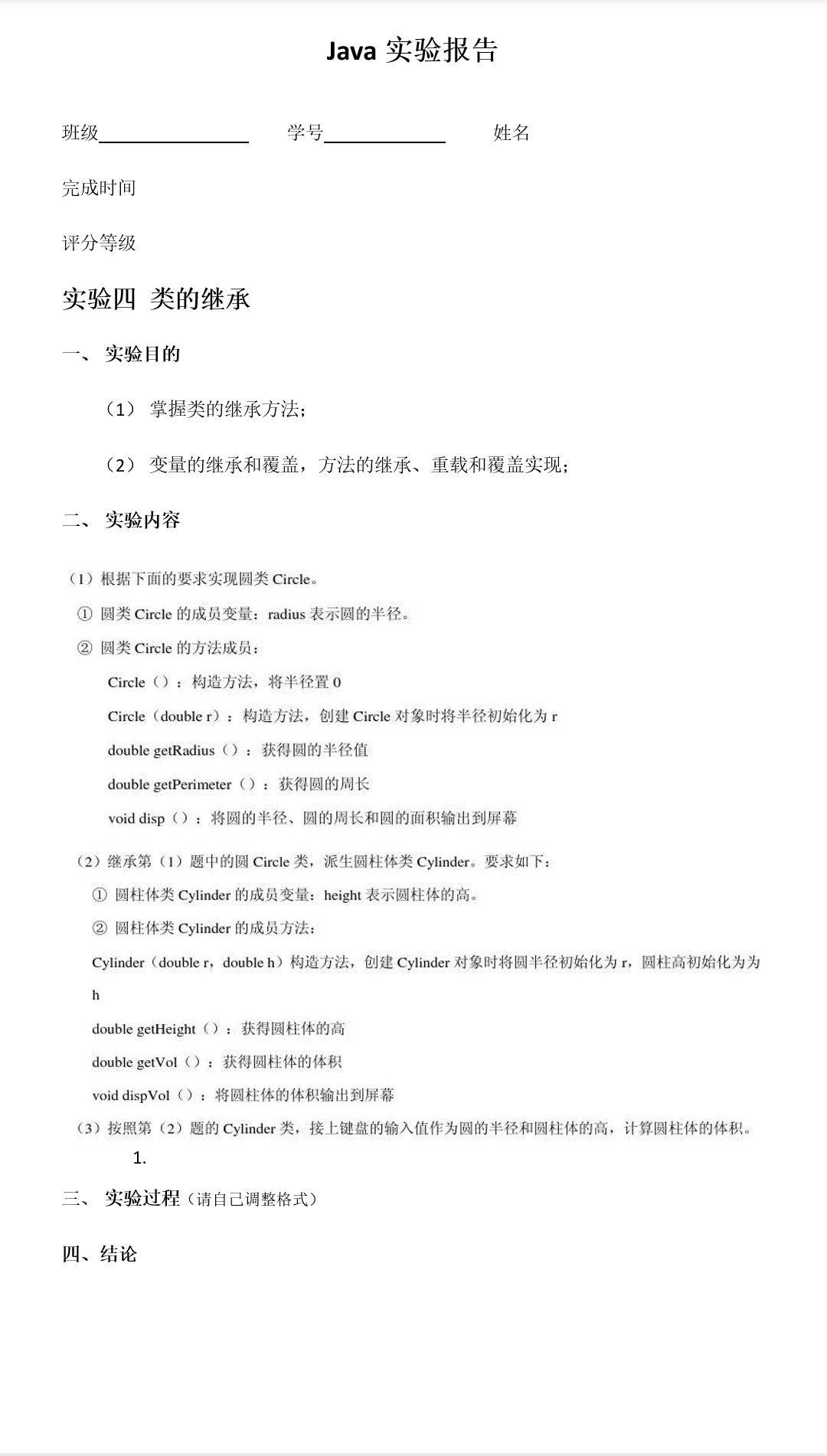题目

代码:
package test;
public class Java4 {
public static void main(String[] args) {
double Perimeter, Area, Vol,;
Circle c = new Circle(2);
System.out.println("圆的半径是:"+c.getRadius());
System.out.println("圆的周长是:"+c.getPerimeter());
System.out.println("圆的面积是:"+c.getArea());
Cylinder cy = new Cylinder(2, 4);
System.out.println("圆柱体的高是:"+cy.getHeight());
System.out.println("圆柱体的体积是:" + cy.getVol());
}
static class Circle{
double PI = 3.14159265358979323846;
double radius; //圆的半径
Circle(){ //把半径设置为零
this.radius = 0;
}
Circle(double r){ //创建对象时把半径初始化为r
radius = r;
}
double getRadius() { //半径
return radius;
}
double getPerimeter(){ //圆的周长
return 2*radius*PI;
}
double getArea() { //圆的面积
return PI*radius*radius;
}
}
static class Cylinder extends Circle {
double height;
Cylinder(double r, double h) {
this.radius = r;
this.height = h;
}
public double getHeight() { //获取圆柱体的高
return this.height;
}
public double getVol() { //圆柱体的体积
return PI * radius * radius * height;
}
}
}
运行截图:

有遇到一些问题来着例如:
错误提示是:无法从静态上下文中引用非静态 变量 this

因为没有好好的理解这句话----“静态方法中不能引用非静态变量”,把Cylinder类和Circle类嵌套定义在Test类中了----
想要解决这个问题有两种方法:
-
把它们从Test类中划出来
-
把它们也定义为静态类
此处我用的是第二种方法,第一种我还不会怎么使用😂
课堂学习总结以及自学总结:
构造函数:
public 类名称(){
调用时直接new一个对象(也就是创造新的对象)
例如:
public person () {
System.out.println(“构造方法执行!”)
}
在main的类下来上一串代码
Person one = new person();
Arrays数组
例如:
//String—>数组
String str = “jdviufvndsnvweoi”;
Char[] chars = str.tocharArray();
Arrays.sort方法,必须是一个数组才可以使用
继承
继承关系当中的特点:
- 子类可以拥有父类的“内容”
- 子类还可以拥有自己专属的内容
格式:
public class 父类名称{
}
Public class 子类名称 extends 父类名称{
}
区分子类方法中重名的三种:
局部变量:直接写成员变量名
本类的成员变量: this.成员变量名
父类的变量名: super.成员变量名
继承中成员方法的访问特征:
创建的对象是谁,就优先用谁,如果没有则向上找
注意:
无论是成员方法还是成员变量。如果没有就向上找父类,绝对不会向下找子类的。
重写(覆写,覆盖)与重载的区别:
重写(Override): 方法名称一样,参数列表【也一样】。
重载(Overload): 方法名称一样,参数列表【不一样】。
方法的覆盖重写特点:创建的是子类对象,在优先使用子类方法



 posted on
posted on

